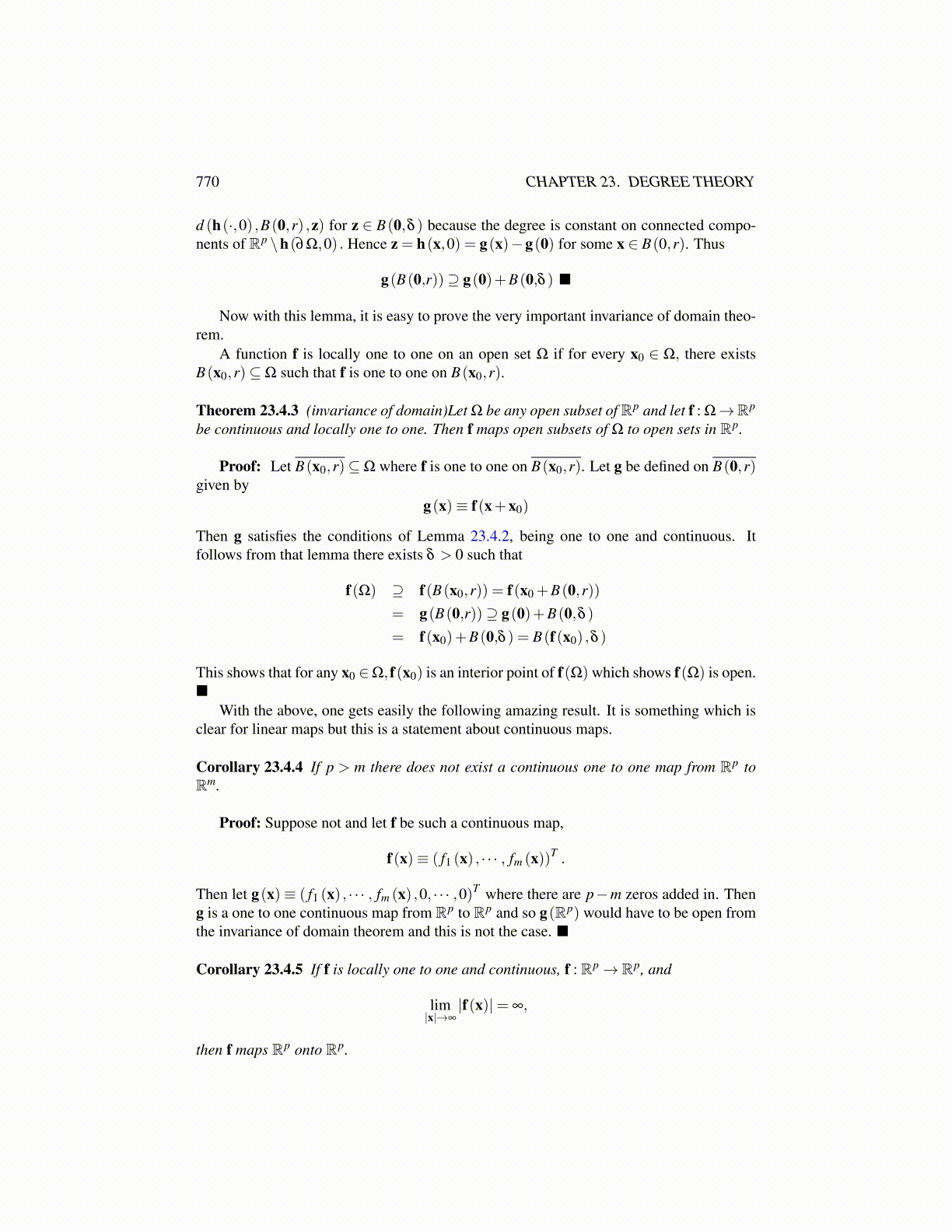
770 CHAPTER 23. DEGREE THEORY
d (h(·,0) ,B(0,r) ,z) for z ∈ B(0,δ ) because the degree is constant on connected compo-nents of Rp \h(∂Ω,0) . Hence z = h(x,0) = g(x)−g(0) for some x ∈ B(0,r). Thus
g(B(0,r))⊇ g(0)+B(0,δ )
Now with this lemma, it is easy to prove the very important invariance of domain theo-rem.
A function f is locally one to one on an open set Ω if for every x0 ∈ Ω, there existsB(x0,r)⊆Ω such that f is one to one on B(x0,r).
Theorem 23.4.3 (invariance of domain)Let Ω be any open subset of Rp and let f : Ω→Rp
be continuous and locally one to one. Then f maps open subsets of Ω to open sets in Rp.
Proof: Let B(x0,r)⊆Ω where f is one to one on B(x0,r). Let g be defined on B(0,r)given by
g(x)≡ f(x+x0)
Then g satisfies the conditions of Lemma 23.4.2, being one to one and continuous. Itfollows from that lemma there exists δ > 0 such that
f(Ω) ⊇ f(B(x0,r)) = f(x0 +B(0,r))= g(B(0,r))⊇ g(0)+B(0,δ )= f(x0)+B(0,δ ) = B(f(x0) ,δ )
This shows that for any x0 ∈Ω, f(x0) is an interior point of f(Ω) which shows f(Ω) is open.
With the above, one gets easily the following amazing result. It is something which isclear for linear maps but this is a statement about continuous maps.
Corollary 23.4.4 If p > m there does not exist a continuous one to one map from Rp toRm.
Proof: Suppose not and let f be such a continuous map,
f(x)≡ ( f1 (x) , · · · , fm (x))T .
Then let g(x)≡ ( f1 (x) , · · · , fm (x) ,0, · · · ,0)T where there are p−m zeros added in. Theng is a one to one continuous map from Rp to Rp and so g(Rp) would have to be open fromthe invariance of domain theorem and this is not the case.
Corollary 23.4.5 If f is locally one to one and continuous, f : Rp→ Rp, and
lim|x|→∞
|f(x)|= ∞,
then f maps Rp onto Rp.